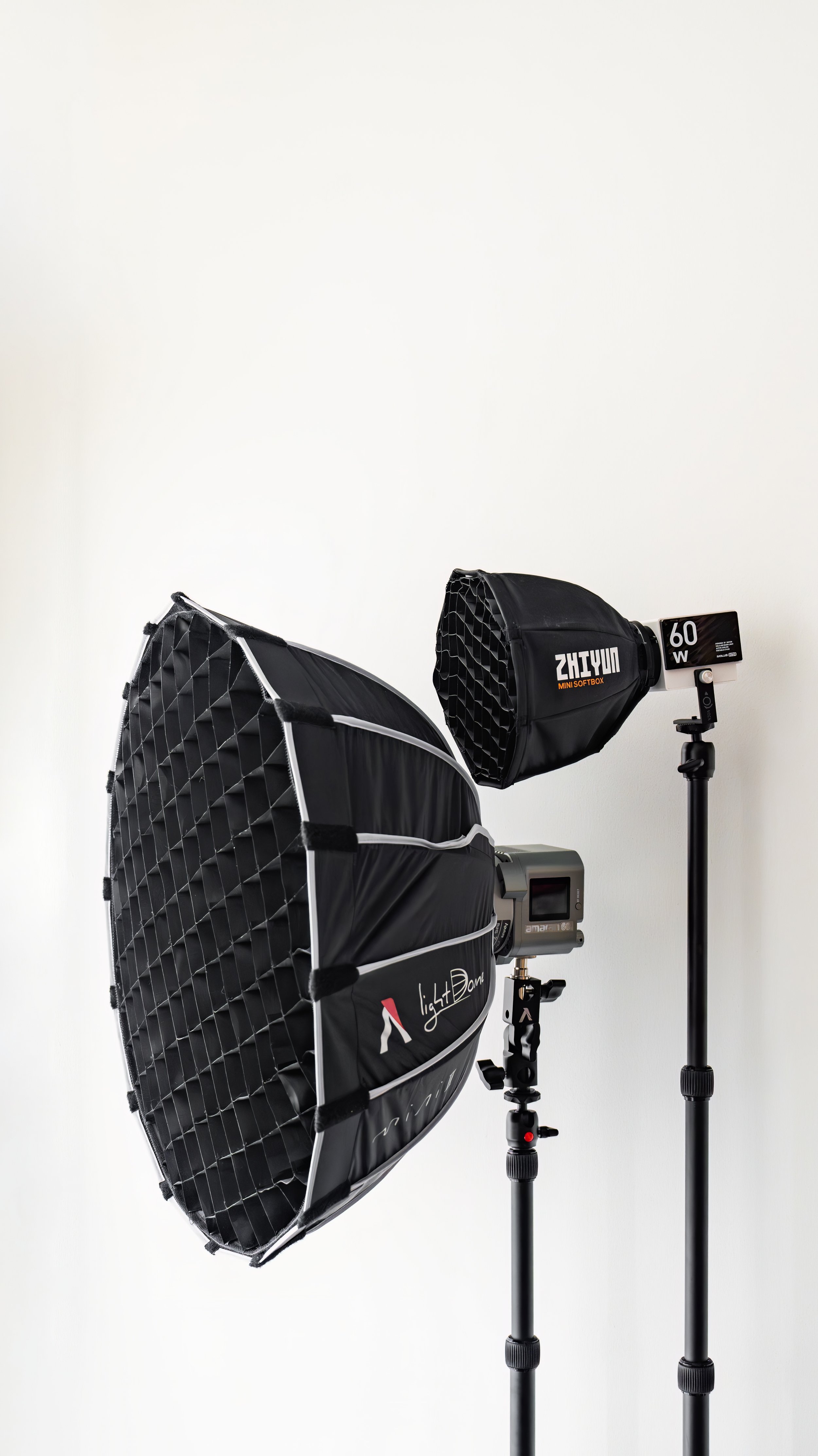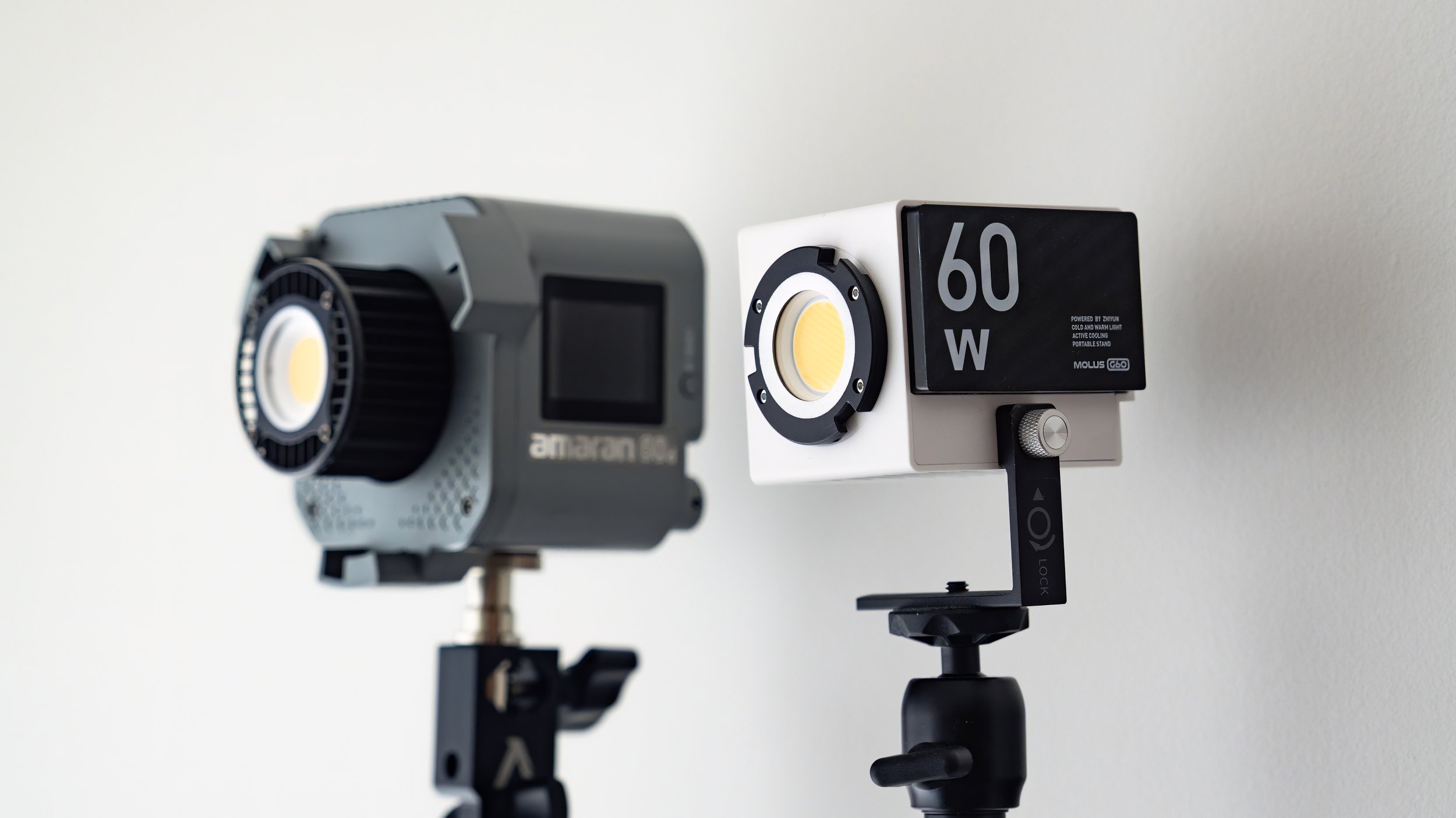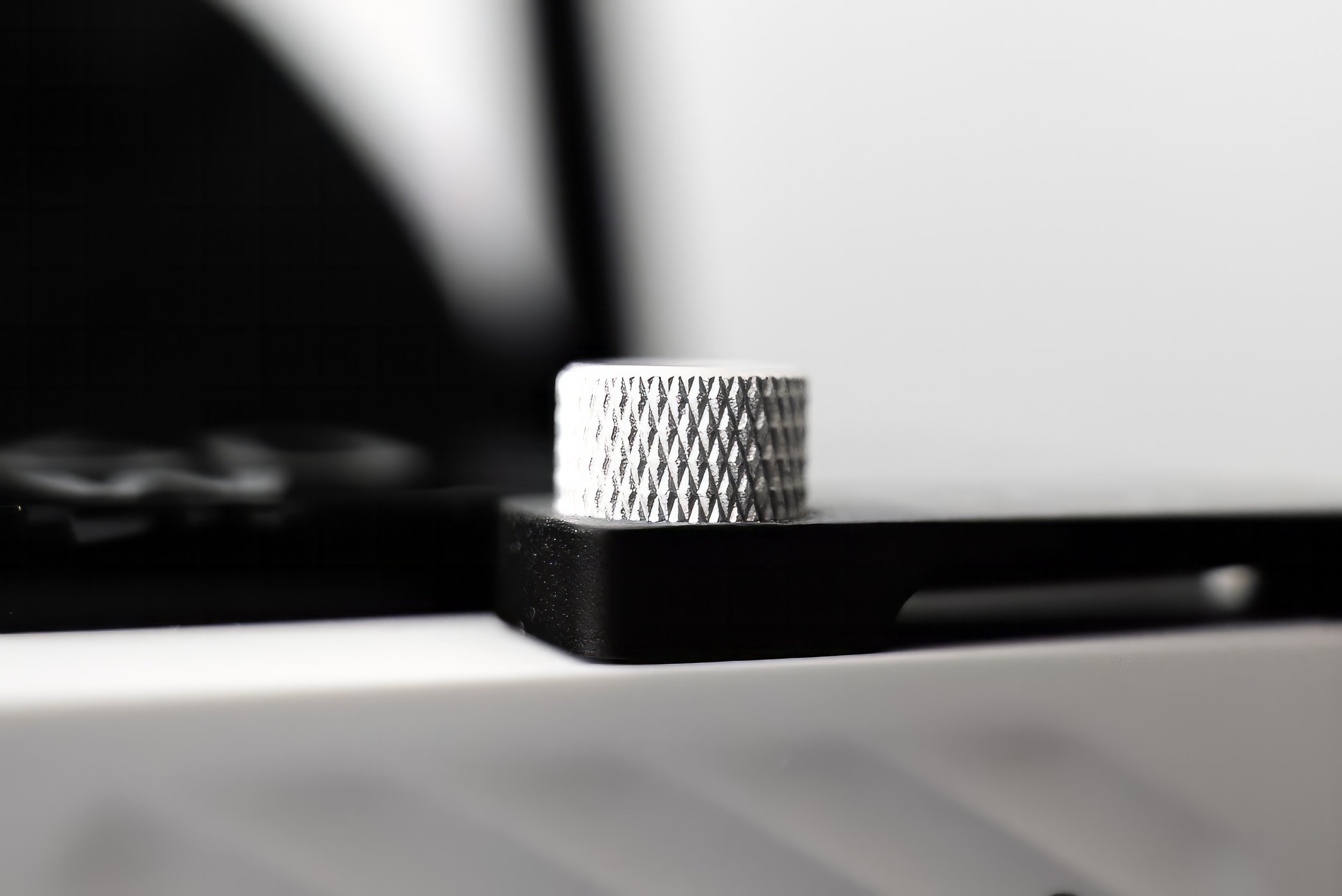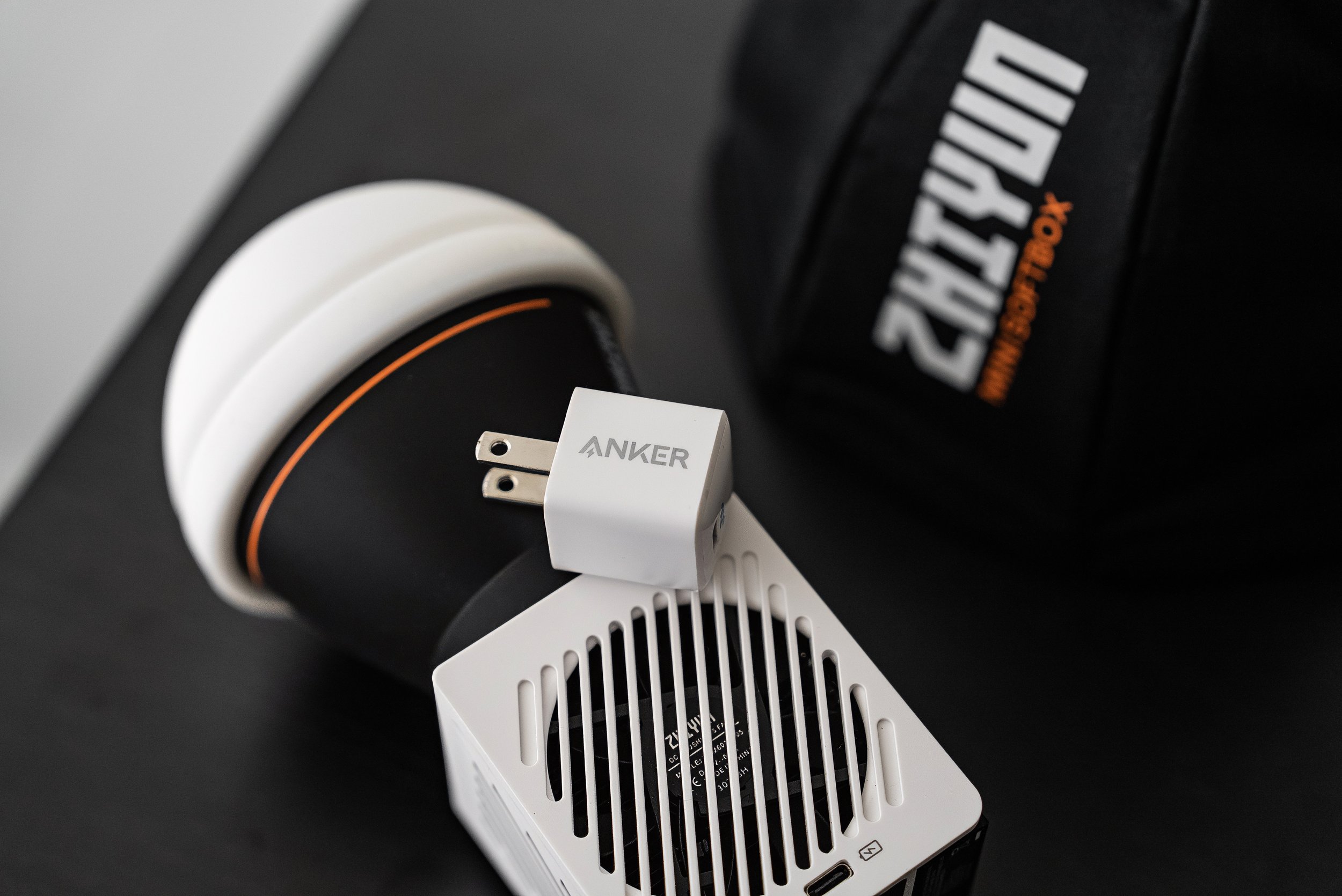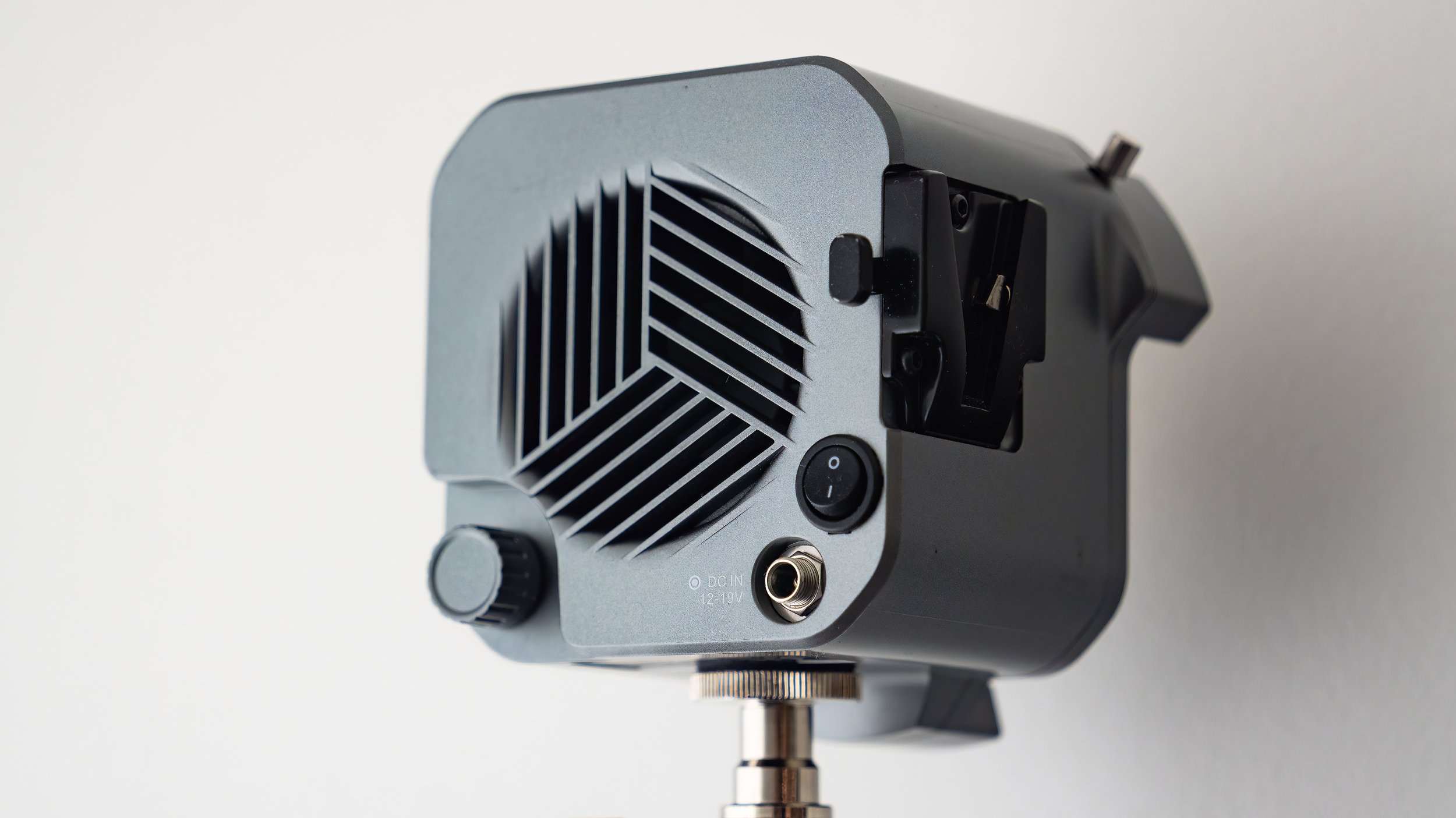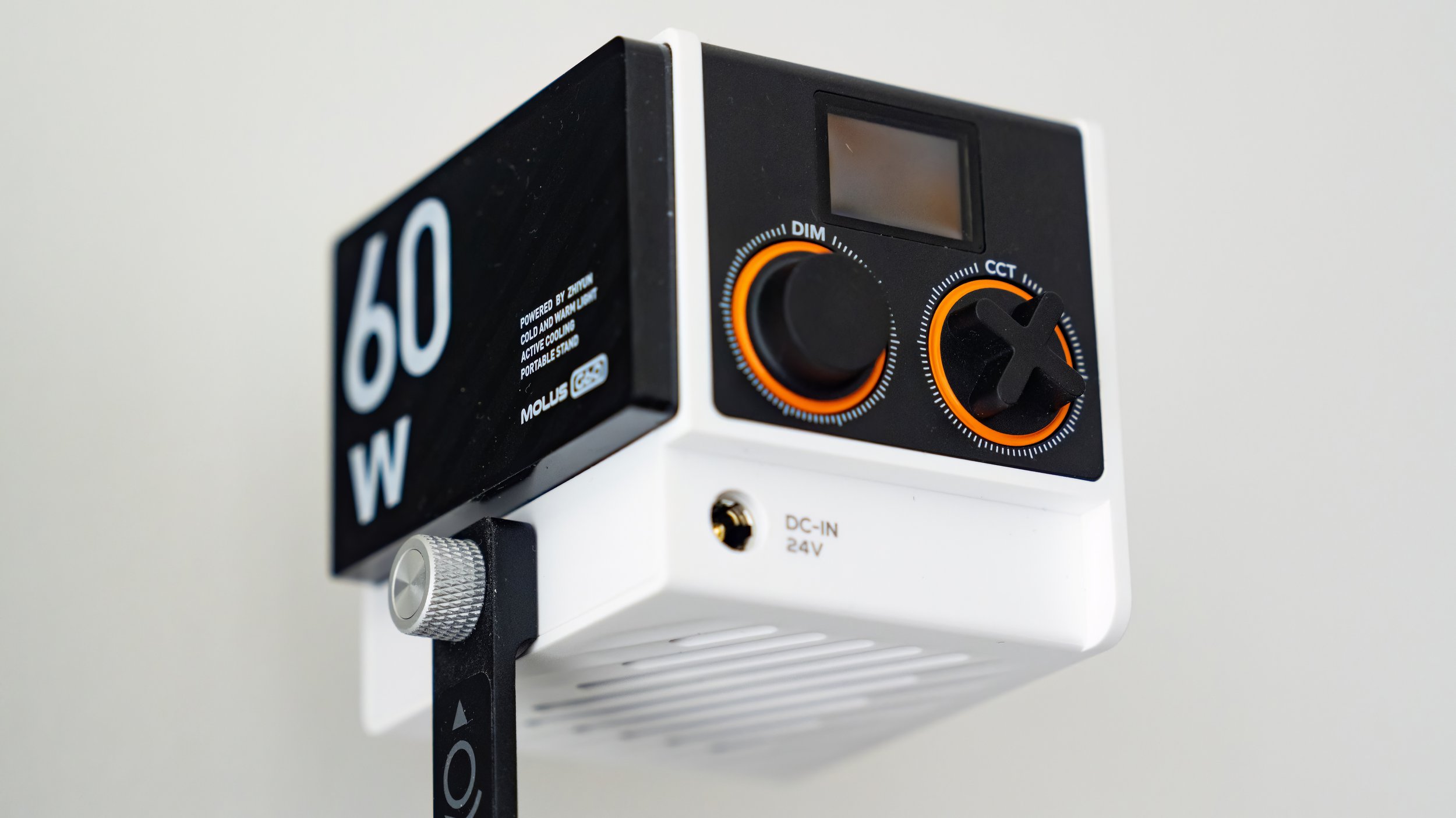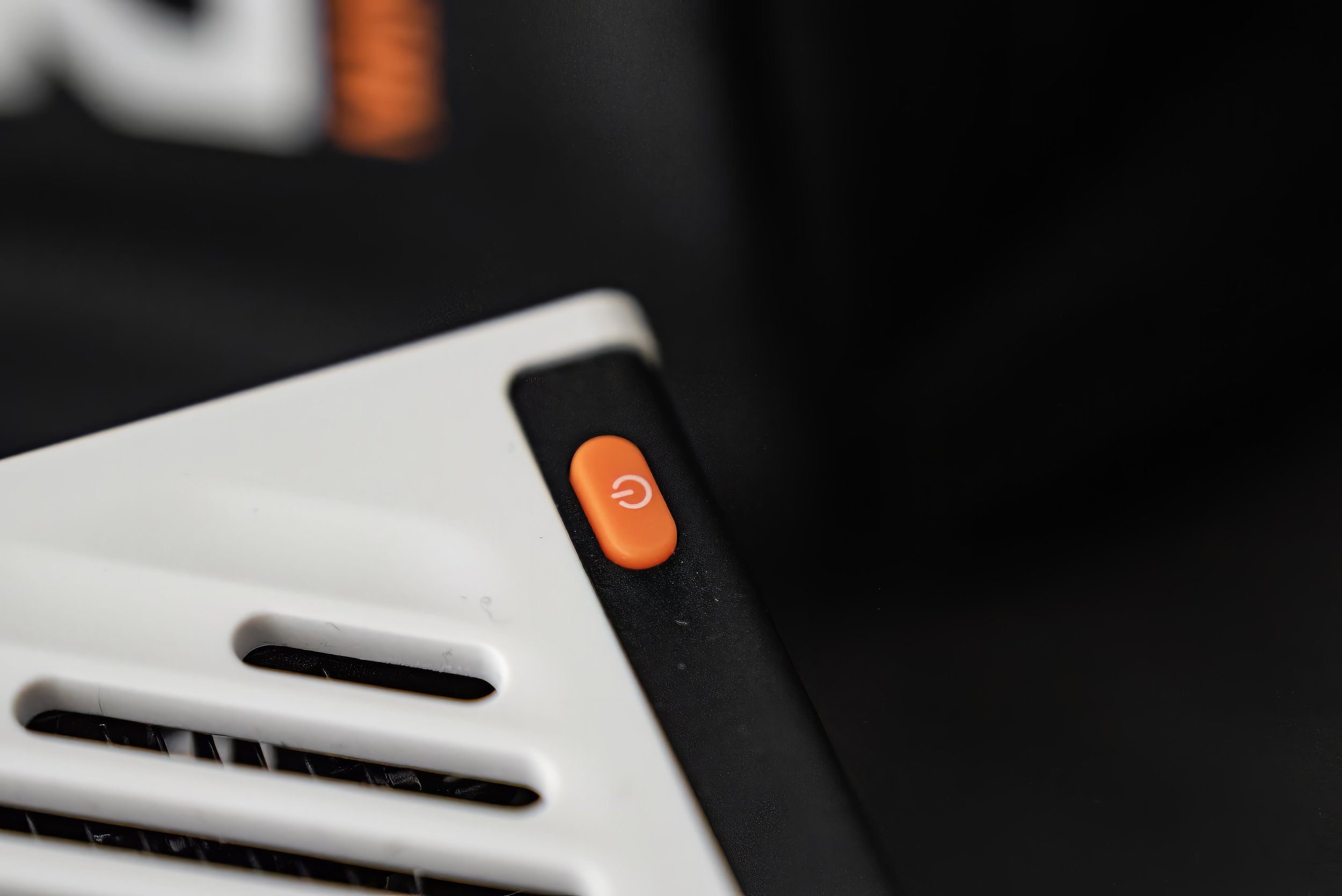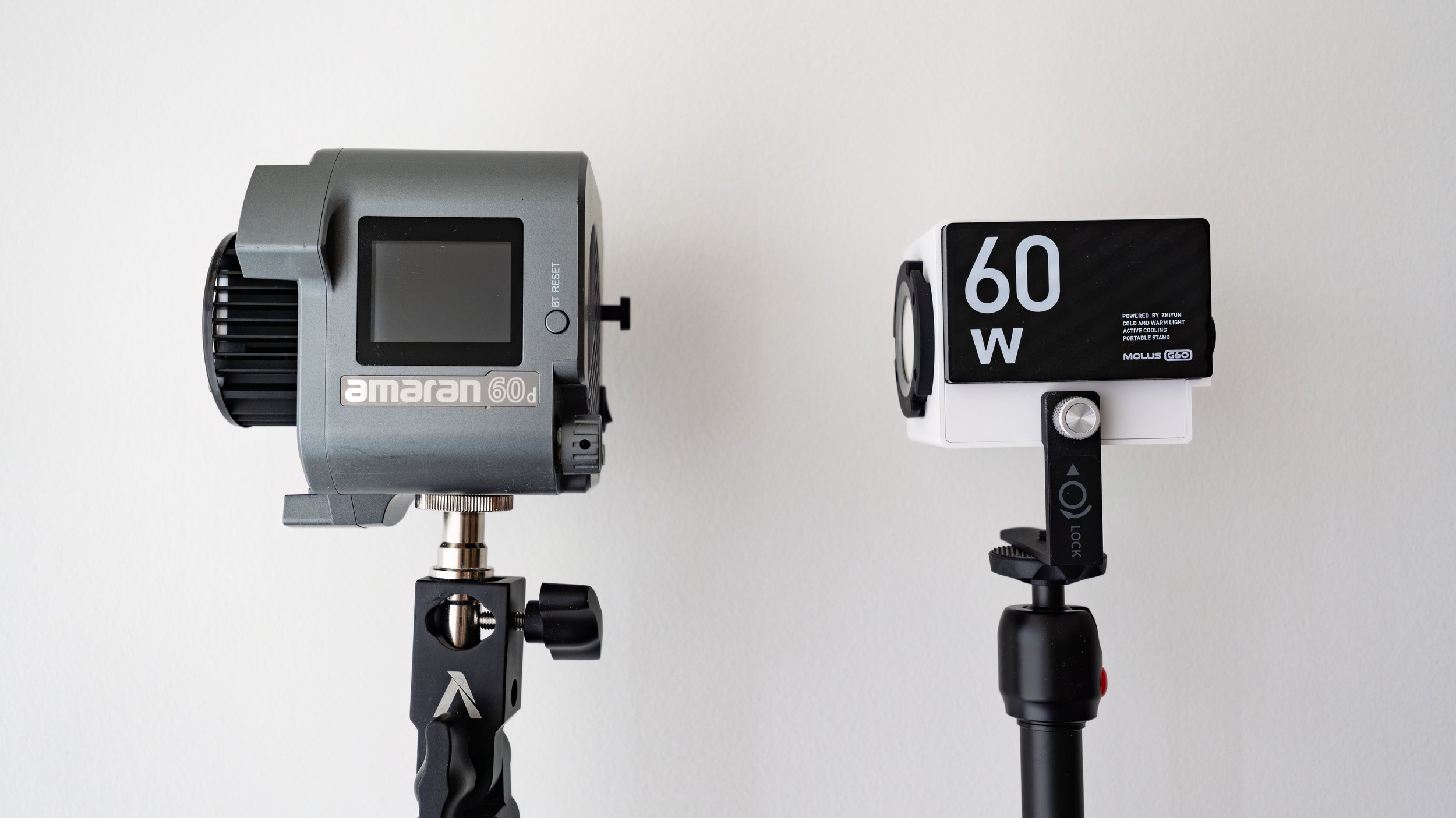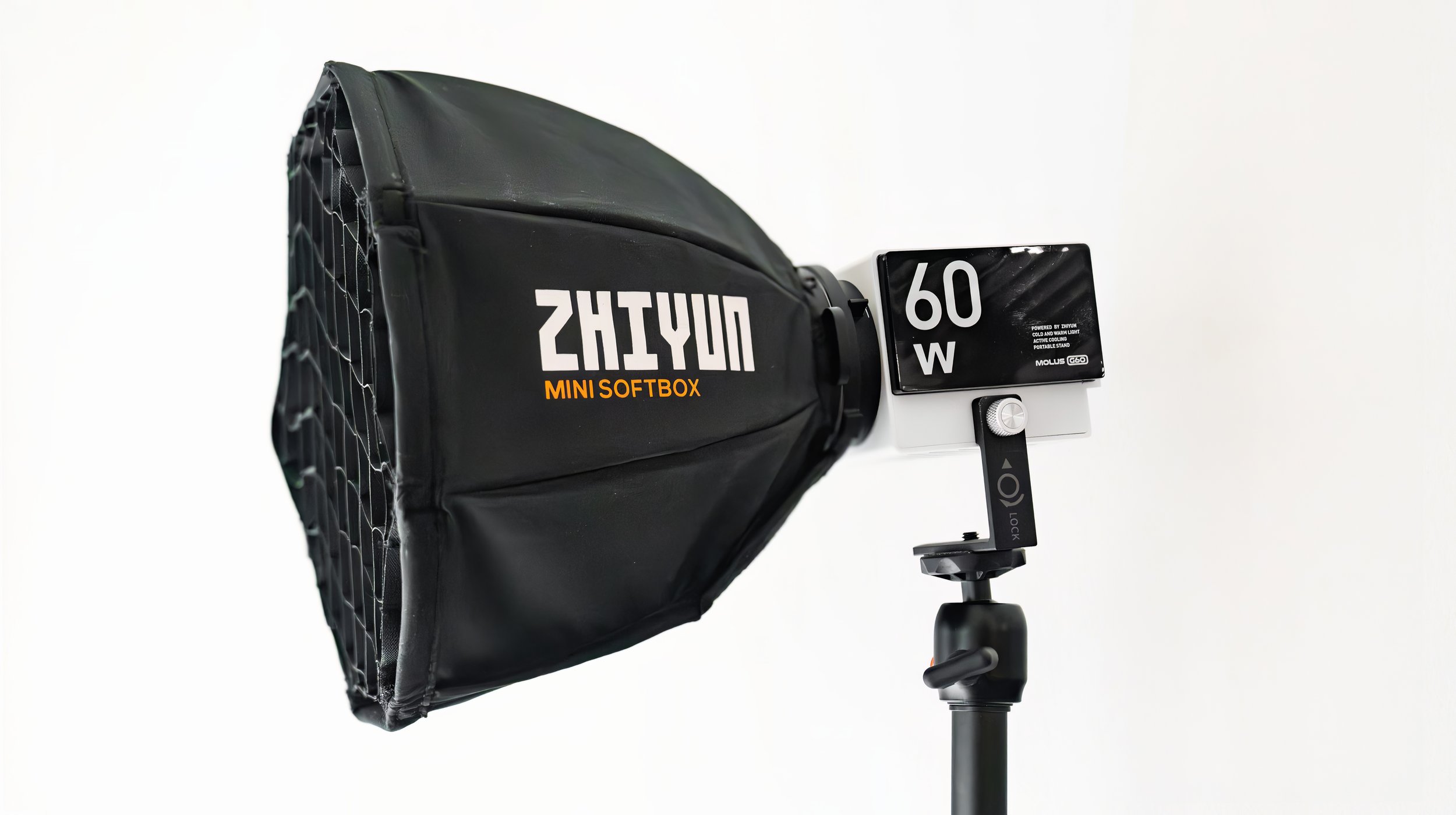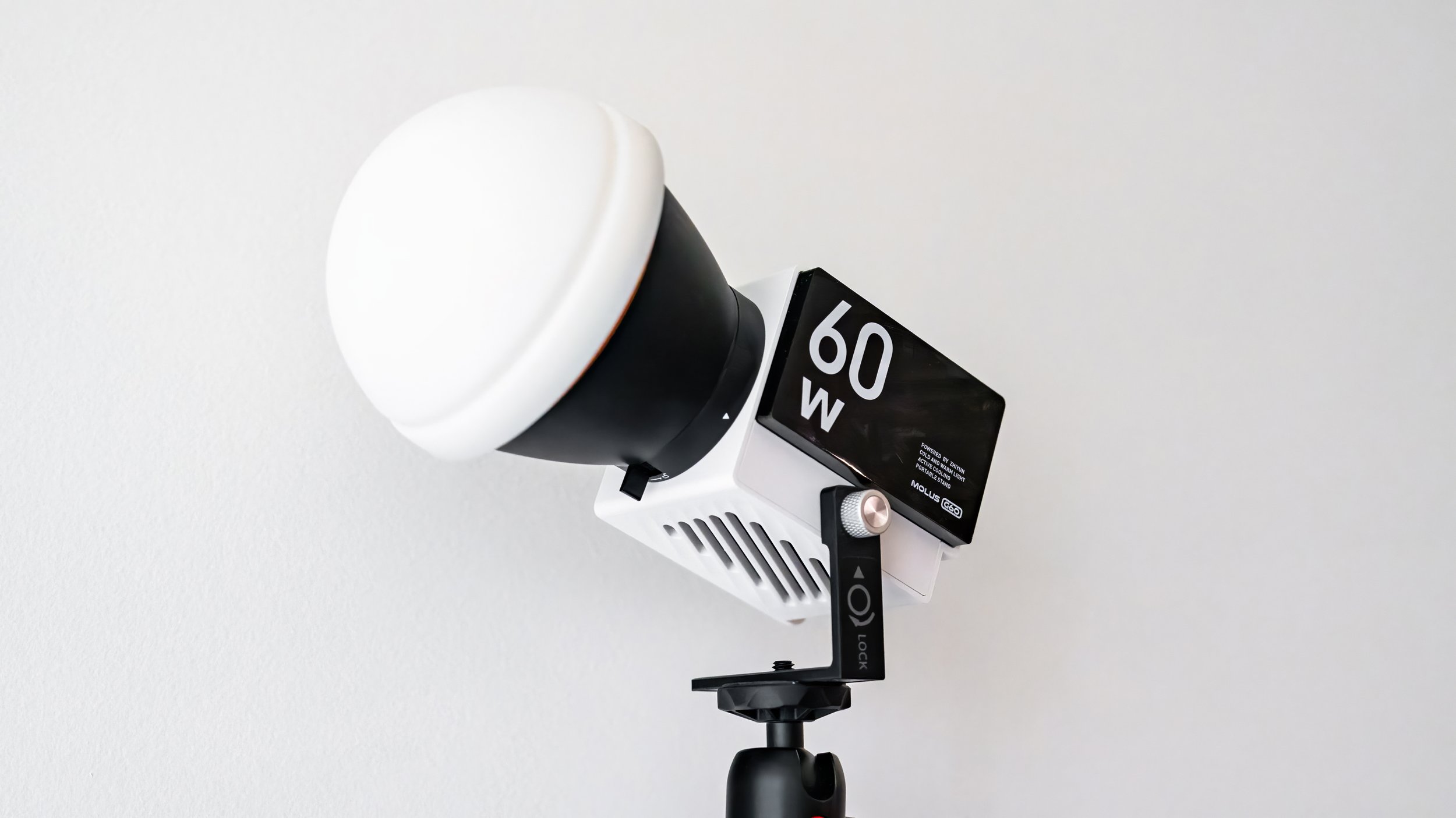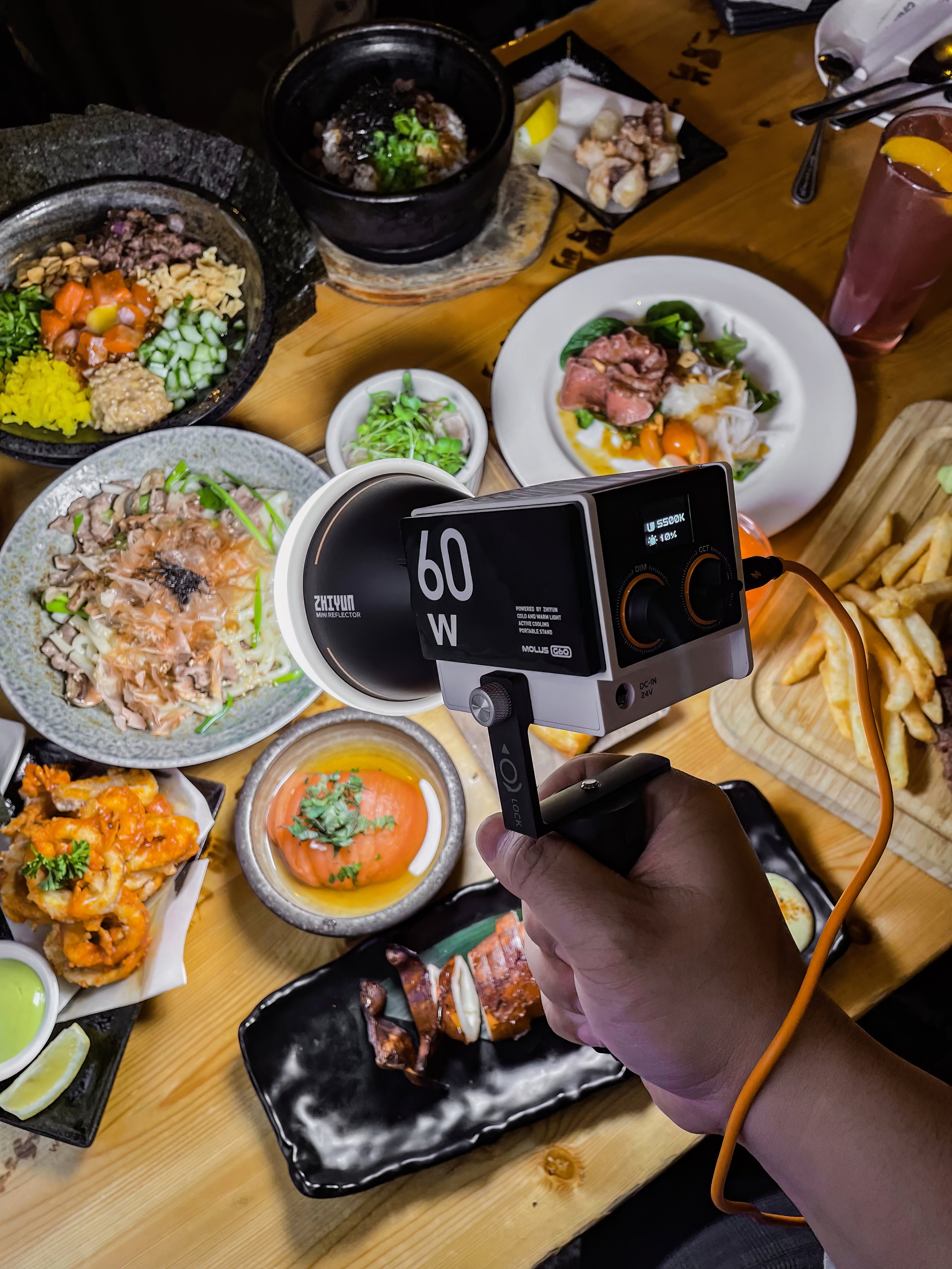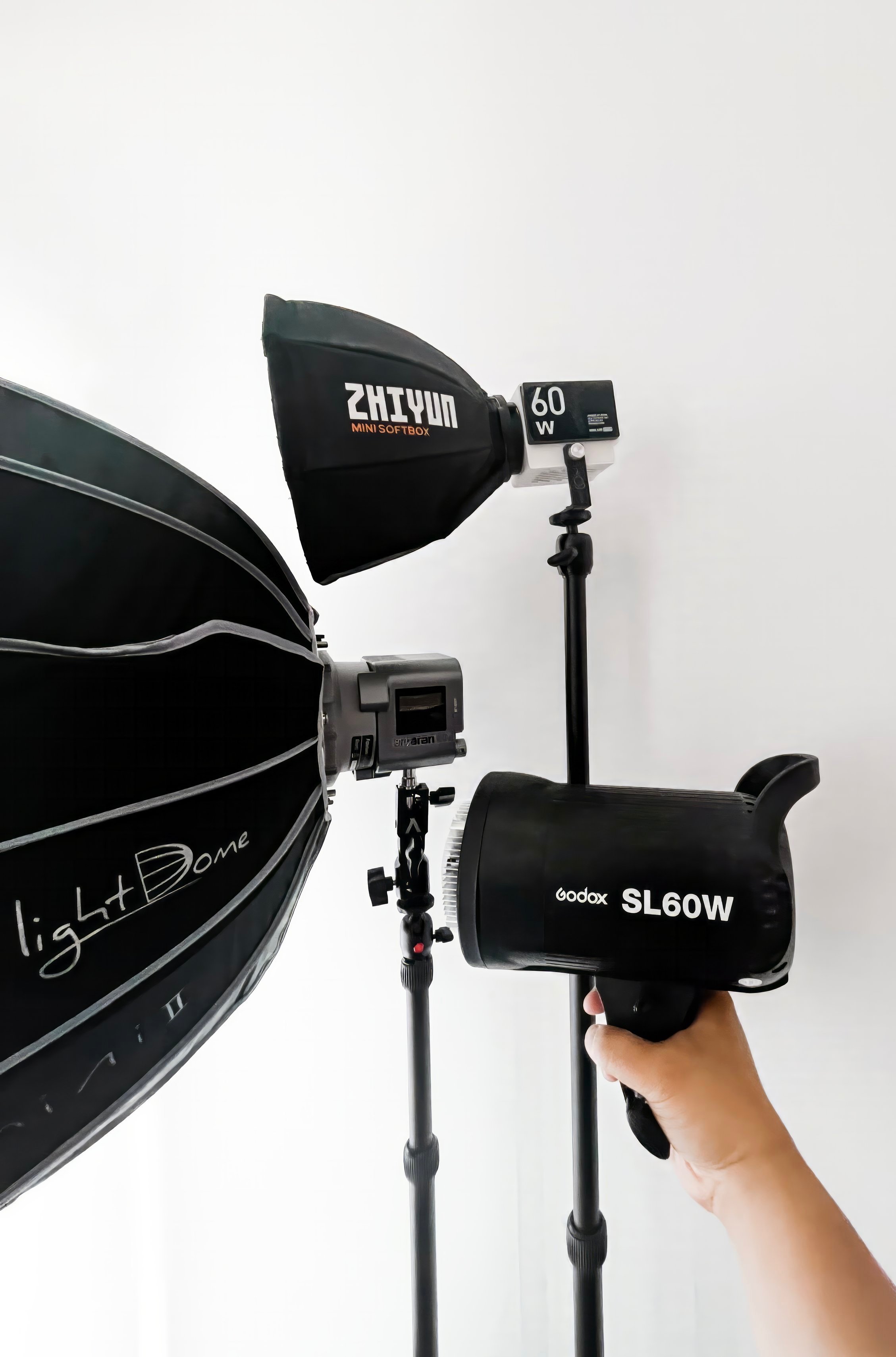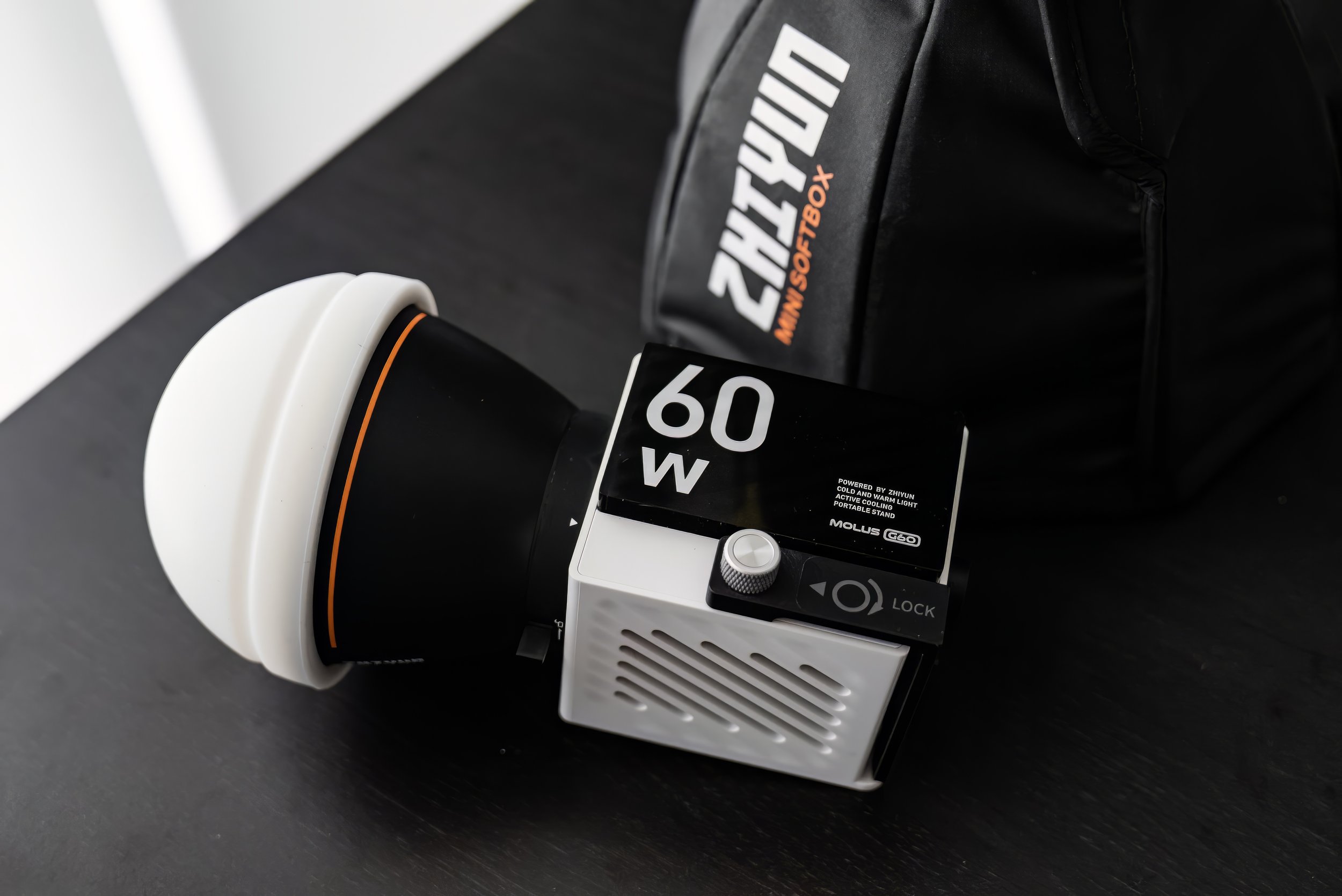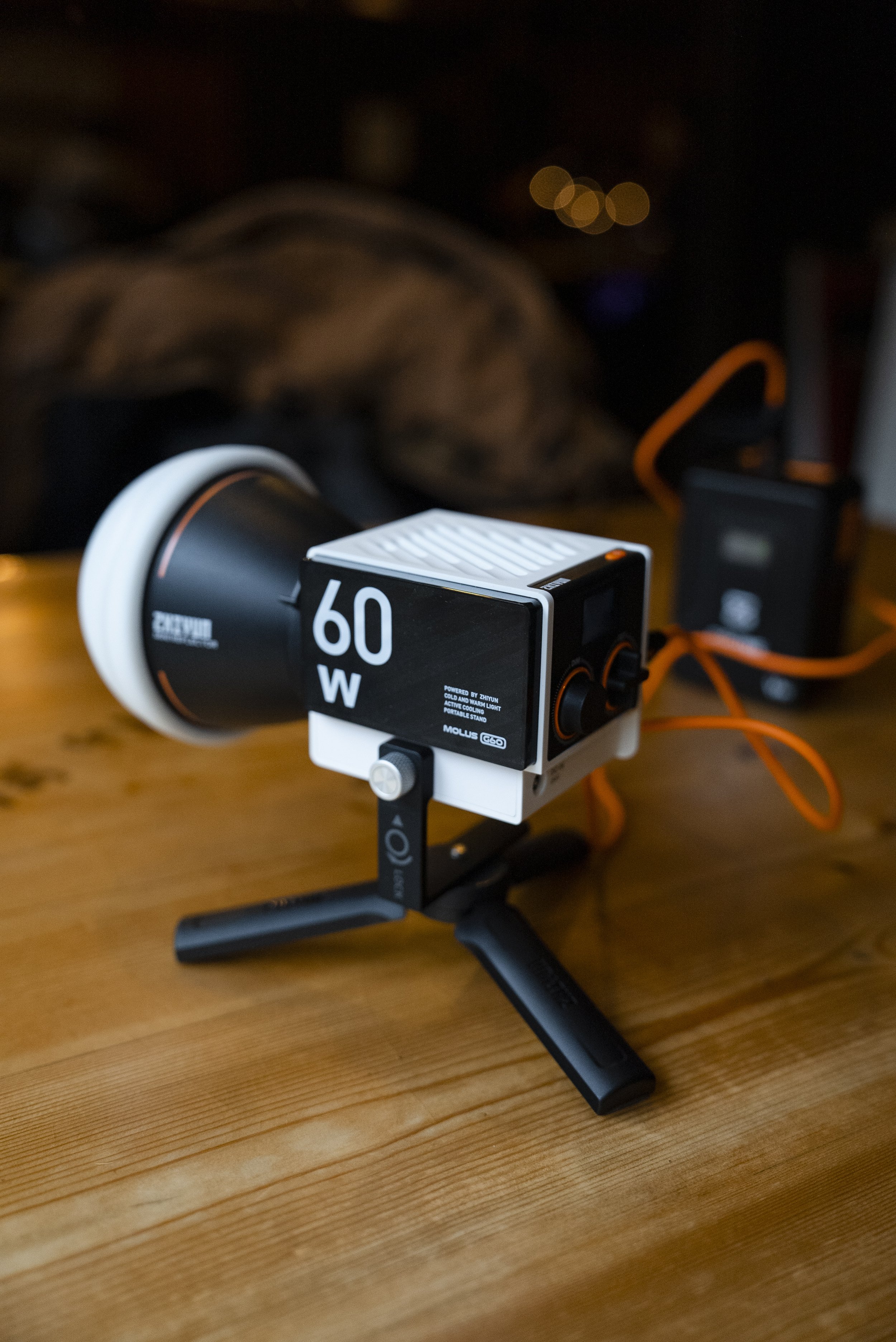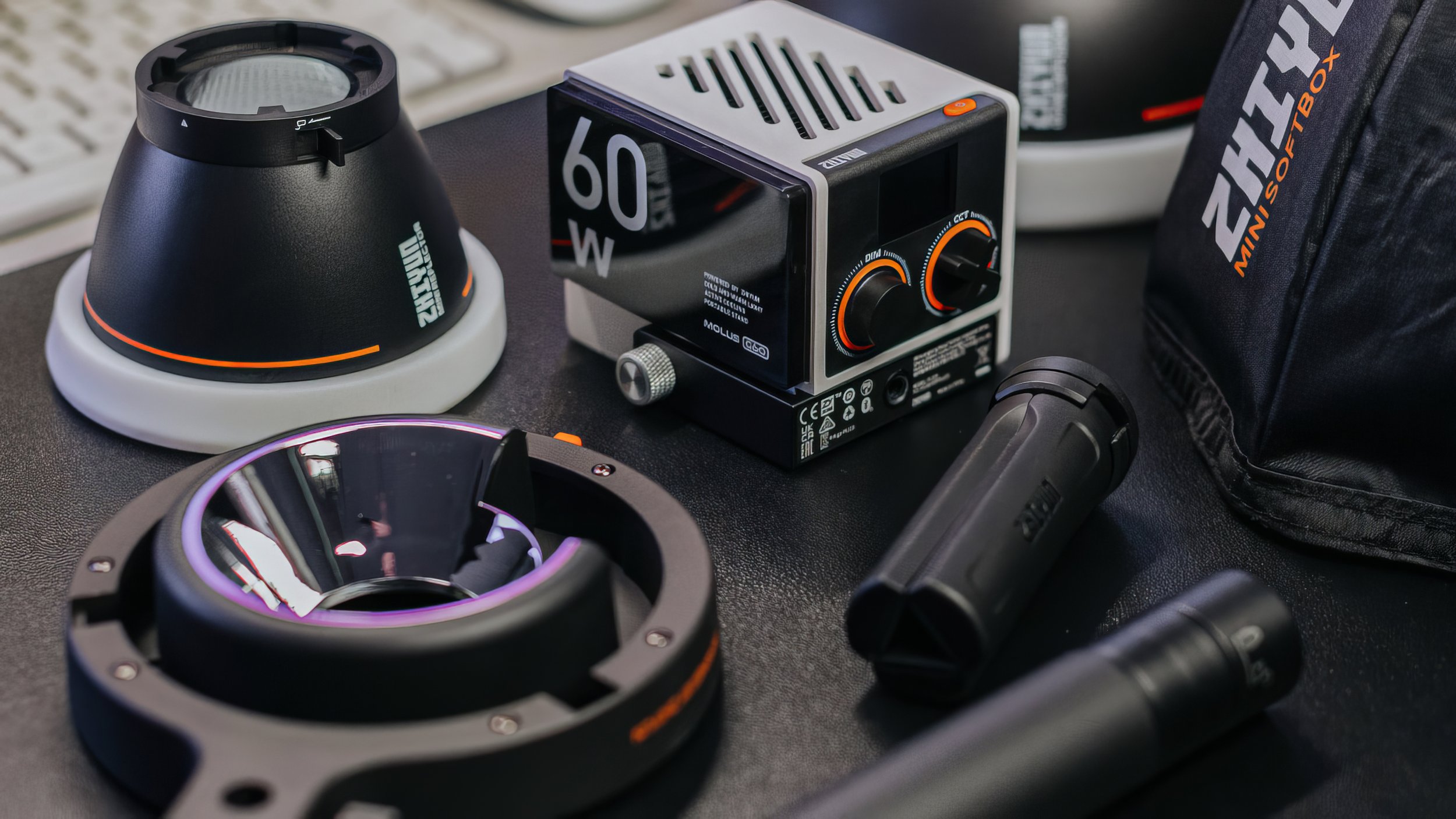Battle of the Lights: Zhiyun MOLUS G60 vs. Amaran 60D - Which Light Reigns Supreme?
When it comes to achieving the perfect lighting for your photography or videography projects, the right lighting equipment can make all the difference. I started off with the Godox SL60, and upgraded to the Amaran 60D. I thought that setup was as small as it’s going to get but then Zhiyun redefined how small a COB can be.
In this blog post, I will compare 2 popular 60W COB lights, mainly the Zhiyun MOLUS G60, and the Amaran 60D. (technically 65W output), to help you determine which one best suits your needs. Join me as I shed light on their features, performance, and overall value.
Let the illuminating showdown begin!
Disclosure: I received Zhiyun’s molus g60 for review.
Design and build quality:
Both the Zhiyun MOLUS G60 and the Amaran 60D are designed with functionality and portability in mind using this cube shape. Prior to the Amaran 60D most COBs were 2-3x the size and came as a rectangular shape. Thanks to compactness of the 60D I could fit it in my camera bag easily but Zhiyun’s MOLUS G60 takes it even further by shrinking it down to the size of a rubiks cube.
It’s more than half the weight of the 60D making it the easiest COB light to mount anywhere.
It comes with a compact bracket to angle the light up and down although the adjustment screw texture is a bit rough to touch. They could copy car infotainment control dials to design something that provides adequate grip but also comfortable to hold. Personally, I would go with a hexagon shape with indents on the flat surfaces for your finger to have something to dig into for grip.
While the light itself is well designed to be very compact, both of these lights come with normal sized power supply which doesn’t really pair well if you need to plug it in. It would have been nice to see them be able to pair it with a compact power supply. With the Amaran light it has a V-mount built into the light so you can operate it without the power supply to get around that issue.
Since the MOLUS G60 has USB-C, I’ve been using an Anker 715 Nano II charger to power the light. The charger only has 65W output so I can’t use the the light at 100% power as it needs 100W. That being said Anker does make a 737 Charger that can output 100W power so it’s possible to get max power using a tiny charging brick. These nano chargers pair well with this tiny light.
light output & quality
Lighting Output at 1 metre without using reflector:
Zhiyun G60 - 2367 lux / CCT 2700 - 6200K / CRI > 96 / TLCI > 97 / Dimming Range 0-100%
Amaran 60D - 2940 lux / CCT 5600K / CRI > 96 / TLCI > 99 / Dimming Range 0-100%
Godox SL60 - 4100 lux / CCT 5600 / CRI 93 / TLCI > 95 / Dimming Range 10-100%
Godox ML60 - n/a lux / CCT 5600K / CRI > 96 / TLCI > 97 / Dimming Range 0-100%
Godox ML60 Bi - n/a lux / CCT 2800 - 6500K CRI > 96 / TLCI > 97 / Dimming Range 0-100%
Godox does not provide lux numbers without reflector on their website for their ML products and I don’t own those to collect the stats myself.
As a consumer, purchasing lights the way they are advertised is confusing. Brands are marketing the output in watts but just because a light has 60W output it won’t be the same among the options. As you can see from the lux values which measure the actual light output they are vastly different with the G60 having the lowest output. When I first unboxed it, I was hoping it would be more powerful than the Amaran 60D because the surface area of the LED (yellow part) is double the size.
As you can see from the specs the light quality (CRI and TLCI) both the G60 and 60D have superb accuracy to reproduce colours as they would appear under natural sunlight. A score above 90 is considered to be excellent while a score below 80 is considered poor.
versatility and control:
The Amaran 60D boasts a sturdy construction with user-friendly design like the large LCD display on the side, and built in V-mount. Having this mount built in really helps enable it for more use cases. To power on the light it’s a flick of a switch.
The MOLUS G60 has a smaller LCD display and control dials on the back. The dials are different shapes making it easy to identify which one to change based on touch alone. This light can adjust the temperature range between 2700 - 6200K enabling users to achieve their desired lighting effects while the Amaran is locked at 5600K. The power on/off button is on the top and requires you to long press it. It’s slower than flicking a switch like on the Amaran. I would prefer a switch personally since it speeds up the workflow.
Both lights provide precise control dimming from 0-100%, and bluetooth functionality to allow for effortless adjustments when mounted in difficult to reach position. For me, I am using it mounted to my desk against the wall so I’m unable to see the rear display. The smartphone app makes it easy for me to make adjustments quickly. Aputure’s Sidus link app is still the best one but other companies are catching up.
If you’re considering the Godox SL60 because of price you’ll want to know, it is unable to dim below 10% so you won’t be able to use it at a very low output. It doesn’t have battery power option so you’ll always have to be plugged into an electric outlet. It’s much larger and is 5x heavier than G60. The fan noise is the most audible of the 3 lights making it not ideal if you want to record audio. It also has no bluetooth app to control the light from your phone but they do sell a wireless remote.
Portability and Convenience:
I tested the G60 at a restaurant. Because there’s no built in battery or way to mount an external power source to the body it makes operating with 1 hand impossible as I need 1 hand to hold the v-mount battery, other hand to hold the light, and a 3rd hand to take the photo. When I was at the restaurant I needed a friend to help me hold the light while I took photos. It would be great if there’s a way to battery power like the X100 to use single handed. It comes with mini tripod legs which I used as a hand grip when going hand held. My favourite part is how small these light modifiers are.
This light is more ideal mounted on a stand. Since it’s small and light, it could be handy to use as an on camera video light if you have your setup rigged out with a v-mount or power bank.
When it comes to on-the-go shooting, portability is crucial. The Zhiyun MOLUS G60 excels in this aspect, being lightweight and compact even with the light modifiers attached. It is convenient to carry add to my camera bag and set up quickly.
The Amaran 60D, while slightly bulkier, still provides portability with its manageable size but Bowen mount light modifiers are much larger. There’s no way to fit the Light Dome Mini II modifier in my camera bag so you’ll need an extra carrying case for the soft box.
Price and Value:
fixed Temperature:
Godox SL60 - $177 CAD (often goes on sale for $100)
Godox ML60 $355 CAD
Amaran 60D - $205 CAD
bi-colour:
Godox ML60Bi $380 CAD
Amaran 60X - $269 CAD
Zhiyun G60 - $250 CAD
If you don’t need bi colour LED or portability, the Godox SL60 is the best value if you can score one for $100. It’s ideal for photos studio setups where it lives on a stand permanently.
The SL60 is not ideal for video as the fan noise is very obvious, For Bi colour COBs, the Zhiyun option is the most compact, lightest and least expensive however if you plan on using it with your existing Bowen mount modifiers you’ll need to purchase an adapter. If you choose the G60 I would think you’d want to use the smaller style soft boxes over Bowens mount versions.
overall impressions:
With all the lights mentioned in this post, they’re all great. I love using each one for different reasons and they all shine bright in their own ways.
The Zhiyun’s MOLUS G60 is for someone who finds value in having the most compact lighting package that’s easy to mount anywhere. It is ideal for streamers to mount to their desk, or on set rigged to creative locations.
The Amaran 60D/60X is for someone who already owns lights that work with the Sidus link app and want to keep all their lights in one ecosystem. It’s great for on-site shoots being portable, has a v-mount built into the body to help power it without a plug and uses the popular Bowens mount.
The SL60 is the best value light for photos in a studio. If you want to shoot corporate interviews you’ll need to consider upgrading to the SL150 or ML60 for a silent fan. The only thing is the SL and ML are considerably more expensive than the Amaran 60D/X. and Zhiyun MOLUS G60.
Ultimately, the choice between these lights depends on your individual needs, preferences, and shooting style. I hope this article has shed light on the key differences and helped you determine which light takes the spotlight for your projects.
